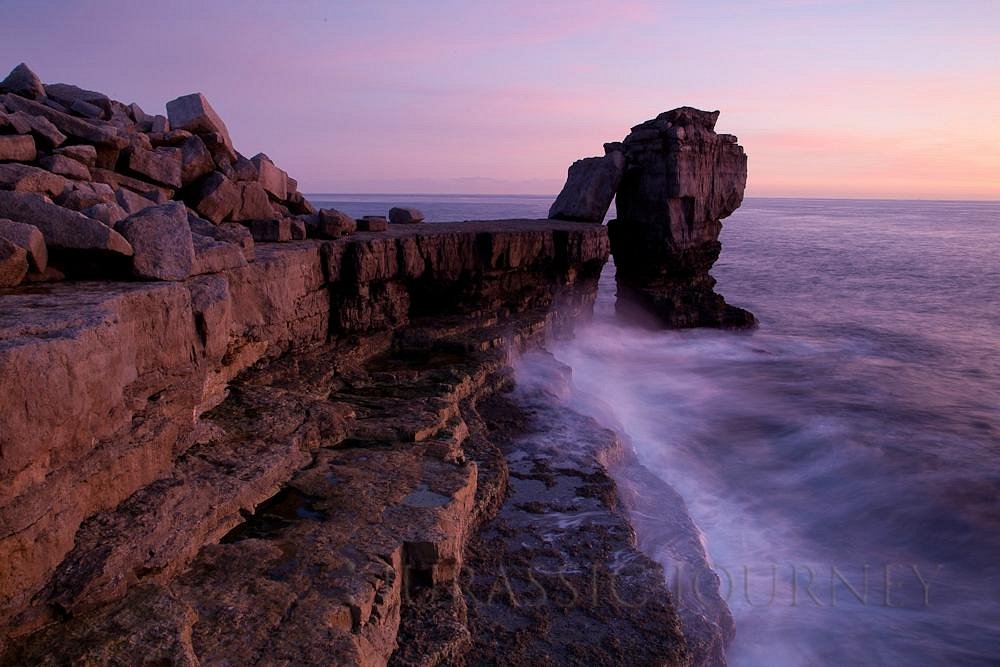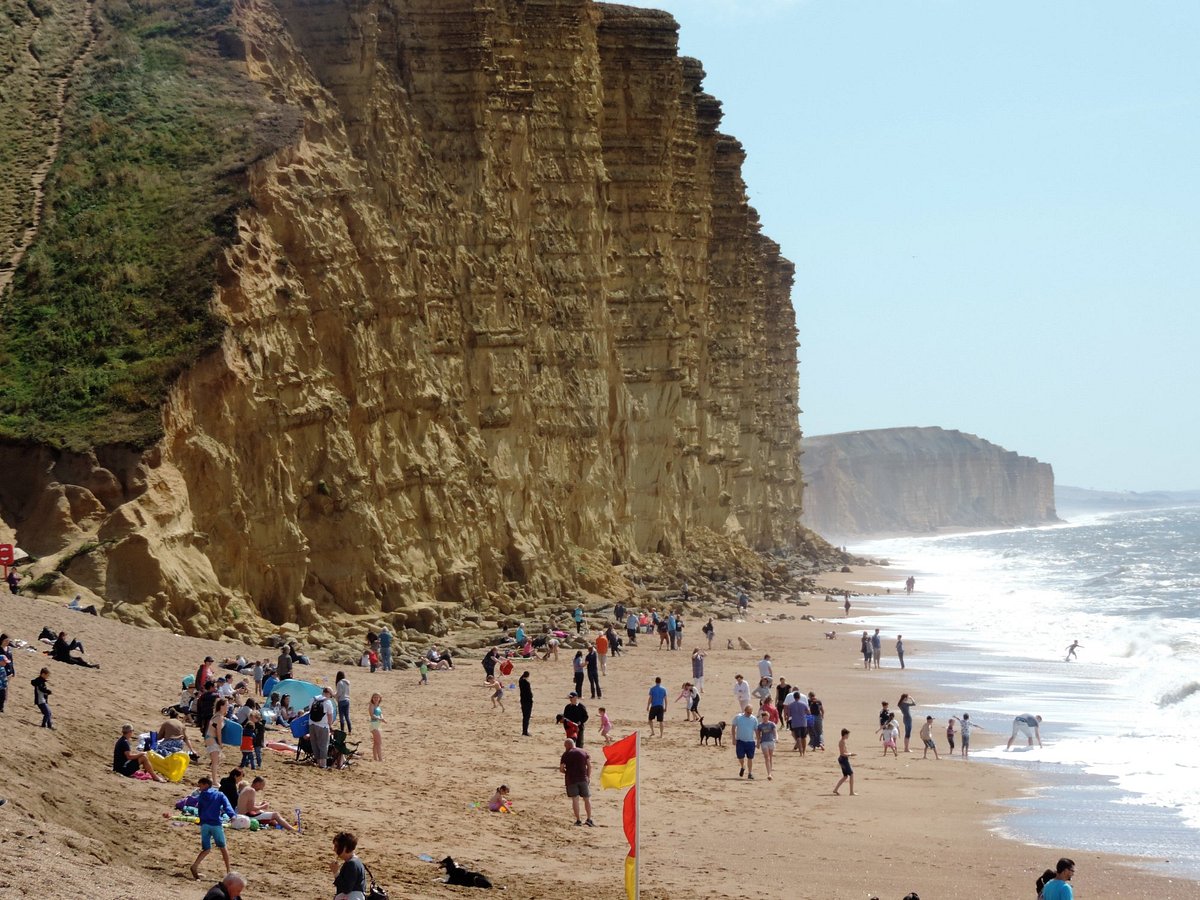Go Back in Time and Discover an Exciting Prehistoric Heritage!
Staying at Eype’s Mouth Country Hotel, you’ll find yourself surrounded by a glorious coastline full of history and adventure.
It’s the perfect base to explore the world-famous Jurassic Coast and discover some beautiful fossils dating back millions of years.
We’ve helped countless visitors make the most of their fossil-hunting visits. If you’d like to learn more about the Jurrasic coastline and pick up some tips for exploring this beautiful world heritage site, here’s what you need to know.

What is the Jurassic Coast?
Geologists, archaeologists, fossil hunters and families all enjoy the Jurassic Coast. Long considered one of the UK’s premier fossil-hunting locations, the UK Fossils Network even uses our hotel postcode as the base for exploring!
Spanning 95 miles and taking in long sections of the Dorset and East Devon coastline, the Jurassic Coast is a landscape of exceptional natural diversity and beauty.
The landscape is one of genuine grandeur and beauty and has inspired millions of visitors to explore walks, relax on the beaches and take in the dazzling views.
Thanks to its rich geology and accessibility, it’s also an area of significant global importance. Inscribed as a World Heritage Site by UNESCO back in 2001, the outstanding universal value of its rocks, fossils and landforms continues to be celebrated worldwide.
A Landscape Rich With Opportunity
Beginning in Exmouth at Orcombe Point and continuing to near Swanage in Dorset, the World Heritage Site reaches from the low tide marks on the beaches to the tops of the surrounding limestone cliffs.
Much of this coastline is undeveloped, and the natural erosion of the limestone is one of the reasons why this landscape is rich with opportunities for fossil hunters.
From Weymouth to East Devon, it’s possible to walk the coastal paths, take advantage of the rugged, unspoilt coastline and step back in time on your very own dinosaur trail!
A Fascinating Fossil Timeline
Although known as the Jurassic Coast, the coastal landscape near Eype’s Mouth contains geological evidence from the Triassic, Jurassic, and Cretaceous Periods.
Rich with finds from the Mesozoic Era (around 250 to 65 million years ago), the rocks and cliffs that make up the Dorset coast offer amateur historians a compelling record.
Two hundred and fifty-two million years ago, the Earth’s crust was stretching and sinking quite violently in this area. All this geological disturbance caused fresh layers of sediment to form, eventually compressing and creating early rock formations.
In the Triassic and Jurassic Periods, the temperature in this part of the world rose and fell, transforming the hot deserts into tropical seas.
By the time the Cretaceous Period began, 145-66 million years ago, sea levels had fallen, and swamps and rivers provided a fertile habitat for life.
Discover the Lost History of Life on Earth

As sea levels changed, sandstone and chalk deposits covered the landscape. These softer formations built up over millennia until more recently, natural (and some human) erosion has shaped this extraordinary landscape.
This unique combination of geology and opportunity has earned the Jurassic Coast its reputation as a vital living record of life on Earth.
With landslides continuing to reveal new stretches of coast, there’s always an opportunity for visitors to discover something extraordinary!
Tips for Hunting Fossils on the Jurassic Coast

Although experts can spend many years searching for elusive and impressive fossil finds, it’s easy for visitors to find something special on a day out or a coastal walk.
There are lots of shops that will hire you some essential equipment, but if you’re planning on going fossil hunting, here are our top tips for success:
- Check the local weather conditions and put safety first. Don’t stand below cliffs and overhangs, and stay away from areas marked as dangerous. Let someone know where you’re going and when you plan to be back. Fossil hunting is a very safe activity, but it always pays to be careful!
- If possible, try fossil hunting at low tide or as the tide goes out. That way, you’ll have a chance to discover newly revealed finds. The fossils most commonly found along the Jurrasic coast are ammonites, and most visitors who have a little patience will usually be able to spot one.
- Bring a good hammer. It needs to be strong but not too heavy, as you’ll need to split rocks all day long! You’ll also need a chisel to remove fossils from rock forms cleanly. A large cold-steel forged tool is ideal, although you might want a smaller one for precise work.
- Be sure to include safety glasses and gloves in your kit. Safety glasses are essential as there’s always a risk of injury from splinters when breaking up rocks. Gloves help keep hands warm after a storm (an excellent time for fossil hunting) and for stopping fragments from causing injury.
- You’ll want a strong bag large enough for your tools and finds and can get wet and muddy without damage. It’s also worth packing a first aid kit, some snacks and a waterproof, just in case. Strong walking boots are also essential as rocks can be slippery when wet. Wear ones that protect your toes and ankles and offer a good grip, suitable for various weather conditions.
For more information, chat with any of our friendly staff, who will be delighted to advise you on weather conditions, hiring equipment or places to visit.
Alternatively, you can check out the Lyme Regis Philpot Museum, a valuable hub for tours and classes. It’s worth a visit as it gives you a superb overview of the area and is fun for all the family.
Best Places for Fossil Hunting on the Jurassic Coast
With a wealth of excellent options, it can be hard to know where to start regarding the best spots for fossil hunting in Dorset. Whilst you might spot a fossil within easy reach of Eype’s Mouth, we recommend these beautiful spots if you want to guarantee a find.
They’re all easy to reach from Eype’s Mouth Country Hotel and make a great day out!
Lyme Regis is an extremely popular town to visit, and for good reason. It’s the epicentre of local fossil hunting and boasts a sheltered sandy beach, cobbled streets and bags of charm. Full of independent shops, it’s packed with curiosity, and you’re sure to find a fossil or two to buy if you don’t fancy hunting for one down on the beach.
It’s also the birthplace of Mary Anning, the renowned palaeontologist who famously discovered the first Ichthyosaur skeleton. For the best chances of finding a fossil of your own, explore Monmouth Beach or Church Cliff beach.
A few miles down the coast from Lyme Regis, you’ll find Charmouth. It’s equally famous for its fossils but sometimes a little less busy than its better-known neighbour. Visiting these two spots makes for a perfect day out (made even better with some local fish and chips)!
The beach is split in two by the River Char, making it ideal for finding fossils at low tide or simply appreciating the natural beauty of the environment.
Head further east into the Purbeck area of Dorset, and you’ll find Kimmeridge Bay. Filled with fossils and teeming with wildlife, you’ll discover rockpools galore in this sheltered, rocky bay. A word of warning, though: the fossilised ammonites and ichthyosaur skeletons visible at low tide must be left for others to enjoy. There’s no fossil hunting allowed on this stretch of the coast!
Lulworth Cove is the last of our big-four fossil locations, and we’ve included it for a good reason. It’s a stunning natural cove located next to the village of West Lulworth in Purbeck. Formed by the sea breaking through the Portland Stone that runs parallel to the shoreline, it’s one of the world’s best-preserved examples of this type of formation.
Not only can you hunt for fossils to your heart’s content, but at Stair Hole, just a few hundred yards from the Cove, you can see astonishing views of the rock layers formed millions of years ago.

Fun for Families on the Jurassic Coast
If you’re visiting us as a family, there are plenty of great activities to inspire young and old alike along the Jurassic Coast.
A firm favourite with families is a trip to Dinosaurland Fossil Museum. It houses a spectacular collection of Jurassic marine fossils, which takes up most of the ground floor of the building. More exotic exhibits include real Chinese dinosaurs, Russian trilobites and a 73-kilo lump of dinosaur dung!
Upstairs you’ll discover a genuinely enjoyable interactive walkthrough exhibition that illustrates how the local landscape has evolved. It also contains some very lifelike dinosaurs!
The Charmouth Heritage Coast Centre is a worthwhile place to visit if you want to get an overview of the area. Taking a slightly more academic and scientific approach to educating visitors about the Jurassic Coast, it is a hub for local enthusiasts, keen visitors and international experts.
It boasts an outstanding display of fossilised remains, and volunteers regularly host guided fossil hunting walks for those keen to learn more about the area’s geological heritage.
Start Your Adventure at Eype’s Mouth
We’re proud to be located on the doorstep of such astonishing natural beauty, and we look forward to sharing it with you!
If you’re keen to explore the Dorset coast and take advantage of this World Heritage Site, get in touch with us at Eype’s Mouth Country Hotel.

0 Comments